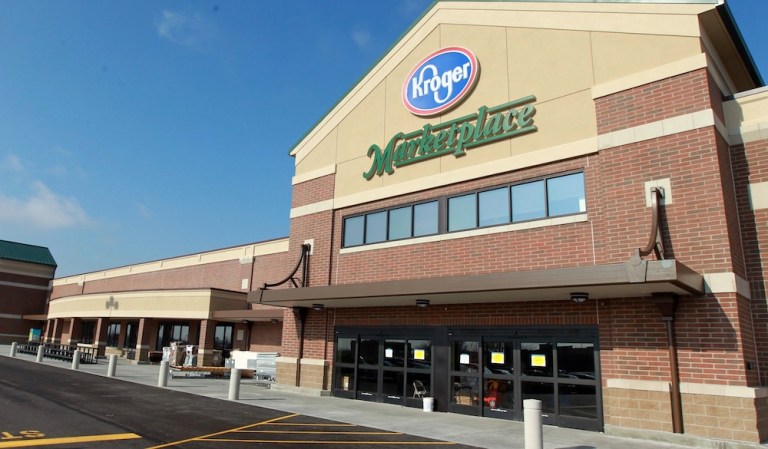Food And Fashion: A Recipe For Foot Traffic?

Target and Walmart proved that consumers are willing – indeed, eager – to buy their groceries where they are already shopping for clothing and other goods. But will they be as eager to buy clothing from their grocery stores?
Kroger is banking on it. Shortly after announcing its data-driven Restock Kroger strategy, which aims to improve customer service and assortment at the sacrifice of physical expansion in a “spend smarter, not harder” approach, the grocer also announced that it would be rolling out an apparel line.
Kroger, the largest supermarket chain in the U.S., already sells clothing at some of its stores, but none of the offerings have been sold under the company’s own label until now. Rather, they are stocked by more than a dozen third-party brands and are only available at a fraction of the grocer’s nearly 2,800 supermarkets, which are located in 35 different states under a variety of different names.
At 300 of Kroger’s Fred Meyer department stores and Marketplace superstore locations, the Our Brands activewear line will join the third-party apparel that’s already on the racks in fall 2018.
Our Brands will include modern lifestyle apparel for children, teens and adults, all of which will be crafted for comfort and style: “clothes to truly live life in, and look good doing it,” according to the grocer. Though no designs are currently available, the line seems to draw inspiration from the popular athleisure style.
“This new brand gives Kroger a chance to inspire and connect with our customers, offering effortless style every day – from elevated basics to fashionable highlights,” said Robert Clark, Kroger’s senior vice president of merchandising, in a press release. “This new offering is on-trend, convenient and right in line with our customers’ needs.”
According to Clark, Kroger’s apparel line needed to be re-invigorated – in the same way shelf displays needed a jolt of new life to give the grocer’s in-house brands a more prominent display.
The move is surely part of Kroger’s effort to remain competitive with eCommerce giant Amazon, which acquired brick-and-mortar organic grocer Whole Foods earlier this year, and with German-based discount grocer Lidl, which is rapidly expanding in the U.S. and also sells apparel.
Competition keeps climbing, and foot traffic and prices keep falling. Competitors are counting on their in-house brands, apparel in particular, to bring traffic through the door.
Lidl has its own clothing line by Heidi Klum, and Target is home to a bevy of brands that are exclusively sold by the big box retailer. The hope here is that consumers will go where the brands they like are sold, and if they’re already there, they might as well make it a one-stop shopping outing and get the groceries as well.
Of course, players like Target and Walmart are putting the squeeze on Kroger as well – a squeeze that grocers are feeling across the board as one-stop shopping, self-service, delivery and pickup win over customers from traditional, dedicated grocery stores and the time-consuming, friction-riddled experience they provide.
In turn, that puts more pressure on already suffering apparel retailers and other brick-and-mortar merchants. Maybe struggling department stores should try selling food?
Snark aside, if groceries alone can’t get customers through grocery store doors – and bottom lines across the industry are showing that they can’t – then a new strategy is needed, whether that means a faster, cheaper, more convenient delivery method, self-serve checkouts or scan-as-you-go devices, or diversification by introducing new types of products, such as clothing.
Which one will be stickiest remains to be seen – but hopefully for Kroger and the rest, it’s the good kind of sticky and not the “cleanup on aisle four” kind of sticky.